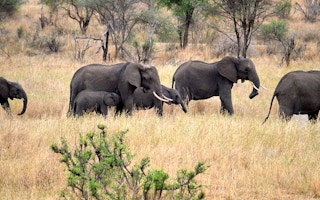On April 3, the United Kingdom announced a ban on the sale of ivory that is “one of the toughest in the world.” By restricting the ivory trade, the UK joined other countries—including China and the United States—in using market deterrents to discourage poaching and shield an endangered species from extinction. As British Environment Secretary Michael Gove put it in the announcement, the goal is to “protect elephants for future generations.”
To continue reading, subscribe to Eco‑Business.
There's something for everyone. We offer a range of subscription plans.
- Access our stories and receive our Insights Weekly newsletter with the free EB Member plan.
- Unlock unlimited access to our content and archive with EB Circle.
- Publish your content with EB Premium.
These are, to be sure, laudable gestures in the service of a noble goal. But ending ivory sales alone will not reverse declines in elephant populations. In fact, the biggest threat facing these and many other species is a far more ordinary human pursuit: farming.
Throughout the developing world, farmers are expanding areas of cultivation in an endless quest for fertile soil. In the process, critical wildlife habitats are being destroyed at an alarming rate. According to the Food and Agriculture Organization of the United Nations (FAO), if current trends hold, by 2050 the world’s arable land will increase by some 70 million hectares, and much of the new farmland will be on areas that are currently forested. The risk is greatest in South America and Sub-Saharan Africa, where population growth and food demand will hit tropical woodlands particularly hard.
“
In fact, the biggest threat facing these and many other species is a far more ordinary human pursuit: farming.
Poverty is at the root of this ecological crisis, but poor farming practices perpetuate the cycle of hunger and habitat loss. In Africa, for example, persistently low crop yields—often just 20 per cent of global averages—are tied to low seed quality, the unavailability of fertilisers, and a lack of irrigation. As soil health declines and output drops, many farmers see no option but to look for new land to cultivate.
Fortunately, there is a way to end this vicious cycle. Research shows that better farming practices and technology can increase agricultural productivity while reducing habitat loss and protecting wildlife. This approach, known as “sustainable intensification,” aims to boost the output of existing farmland using techniques such as integrated crop management and advanced pest control. If applied widely, sustainable intensification could even reduce the total amount of land currently under cultivation.
This is not an impossible goal. Over the last 25 years, farmers in more than 20 countries around the world improved food security while maintaining or increasing forest cover. According to one study, between 1965 and 2004, farmers in developing countries who planted high-quality seeds were able to reduce farmland by almost 30 million hectares – an area roughly the size of Italy. These gains could be extended further if smallholder farmers had access to modern equipment, better data collection and analysis, and more financing.
Critics argue that increasing the productivity of smallholder farms could backfire, especially if it encouraged poor farmers to expand their acreage in the hope of increasing profits. To avoid this outcome, intensification strategies much be accompanied by strong conservation planning.
At the same time, however, farmers in developing countries cannot simply be asked to stop using non-farm resources adjacent to their fields. Many people in poor communities rely on woodland products for fuel and construction materials, and government policies that prohibit use of these resources without offering adequate alternatives will likely fail. Rather, the ideal conservation approach in developing countries would link agricultural and economic support to strict limits on farmland expansion.
That is far from being the case today. Around the world, billions of dollars are invested annually to address environmental degradation and poverty; many of the 17 UN Sustainable Development Goals are linked in some way to these two concerns. And yet, most programmes designed to tackle these issues operate in isolation. This is a mistake: solutions to food insecurity and habitat loss must be better integrated if either challenge is ever to be solved.
No one doubts that well-meaning policies like ivory bans can lessen the ecological impact of human activity. But, at the moment, farming—the activity most responsible for damaging the health of many species—is failing to attract the policymaking attention that it deserves. Until that changes, government strategies to protect wildlife “for future generations” will very likely come up short.
Maxwell Gomera is director of the Biodiversity and Ecosystem Services Branch at the United Nations Environment Program. Edward Mabaya is a senior research associate at Cornell University.
Copyright: Project Syndicate, 2018.
www.project-syndicate.org












